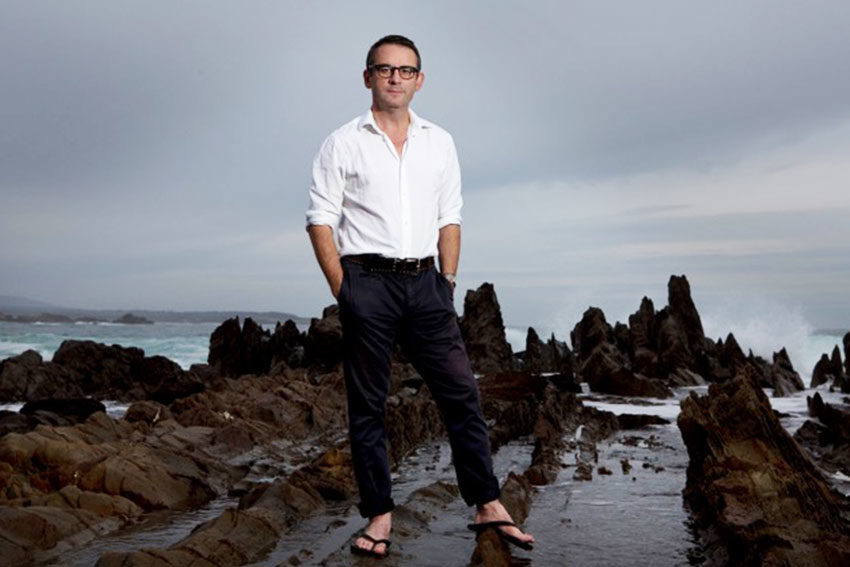Musica Viva's new artistic director Paul Kildea on creating unmissable experiences

The new face of Musica Viva shares his plans for one of Australia’s great champions of chamber music.
Jetting off to hear the world’s top classical artists at prestigious venues like Wigmore Hall in London may be one option, but it is altogether easier to stay in in Adelaide and sample the same or similar artists if they are able to tour here.
Musica Viva is one of the few organisations in Australia with the capacity to bring out top chamber musicians on a regular basis, and its reach into the international scene is about to grow stronger with the appointment of Paul Kildea as its incoming artistic director. Kildea succeeds Carl Vine who was 21 years in the job.
A native Canberran, Kildea began his musical journey as a trumpeter, moved into conducting before taking up high-powered curatorial positions in the UK. For four years he was artistic director at the famed Aldeburgh Festival and directed the concert series at Wigmore Hall from 2003 to 2005. Since then, Kildea has directed the Perth Festival chamber music series and the Four Winds Festival at Bermagui on NSW’s far south coast. Somehow in between, he also managed to pen two books for Penguin, on Benjamin Britten and Chopin.
So what will Musica Viva look like under Kildea’s direction?
“I hope to make use of the network of musicians I built up while I was working in London,” he says. “My line as an artistic director is: How does one create completely unmissable experiences? The answers involve saying what this is and how one delivers it.”
He ought to know. At Wigmore Hall, Kildea programmed many lesser-known and newer artists, occasionally in the process delivering shocks to the local musical establishment. In one of the concerts, American jazz pianist Brad Mehldau played blues arrangements of The Who, Neil Young and the Beach Boys. Other artists Kildea engaged at Wigmore included young string quartets such as Quatuor Ébène and the Doric String Quartet, and opera singers including tenor Allan Clayton, who brilliantly took the role of Hamlet at the 2018 Adelaide Festival.
Kildea says he won’t be upsetting the applecart in his new job, however.
“Musica Viva carries an amazing legacy. Under Carl [Vine] and [Mary Jo] Capps, its former CEO, the organisation has grown hugely over the last 20 years, and anyone who comes in will have a deep respect for the organisation,” he says.
Nevertheless, innovation is definitely on the cards. He says programming design “will be exactly the same and yet completely different”.
“As an artistic director, there is also one’s own taste and preference. Coming in to an organisation, one naturally asks: Do this, try that. In turn this becomes a distinctive influence on the course one takes.
“Certainly I am going to try to keep innovating the artform. The question is, how are you going to do parallel tracks, on the one hand respecting the artform’s heritage but also thinking about where its future lies. I don’t see a conflict between the two. My training is in the heritage side, but my eye is to the future.”
That future, Kildea continues, involves bringing “completely unmissable experiences” into reach for more people. Traditionally, Musica Viva concerts have tended to play to a particular demographic – one notices in particular that there are few young working professionals or students in the audience. But all that may be about to change.
“There will always be change as audiences themselves always change,” Kildea says. “We still have a very good and rich subscriber base, but increasingly people sign up to go to single concerts. You can only be an artistic director if you have a complete belief in what you are offering to listeners.
“It is also not just passively coming to a concert and going home afterwards. I want a more rounded experience, one that begins with thinking about music as a whole experience. That encompasses not just the artistic performance but the whole process. That starts with booking a ticket through to the place where the concert happens and that gets people talking afterwards.
“That place could be a barn in rural Australia.”
So does Kildea still favour the Town Hall for Musica Viva concerts here in Adelaide? Or is this venue a bit stuffy for younger listeners?
“We will always use the Town Hall, Angel Place in Sydney and the Melbourne Recital Centre,” he says. “I heard a newcomer saying about the MRC for instance, ‘Oh my god, this place is just incredible for music’. At the same time, there can be a real feeling of trepidation about venues for people who are contemplating going to hear live classical music for the first time, and we need to address that. That’s why I also love the idea of something more informal.”
Kildea says that the answer to attracting millennials includes greater use of social media for publicising concerts, and holding social events such as preconcert get-togethers and post-concert cocktails that allow people to interact as part of the experience.
“The distractions and attractions today are so different to when Carl and Mary Jo came in,” he says. “The mobile phone had only just appeared, for instance. Now one has to think about how people prioritise time and money, and how to make classical concerts stand out from the competition.
“If younger people are thinking of going out to hear music, one needs to work that much harder to get them to come.”